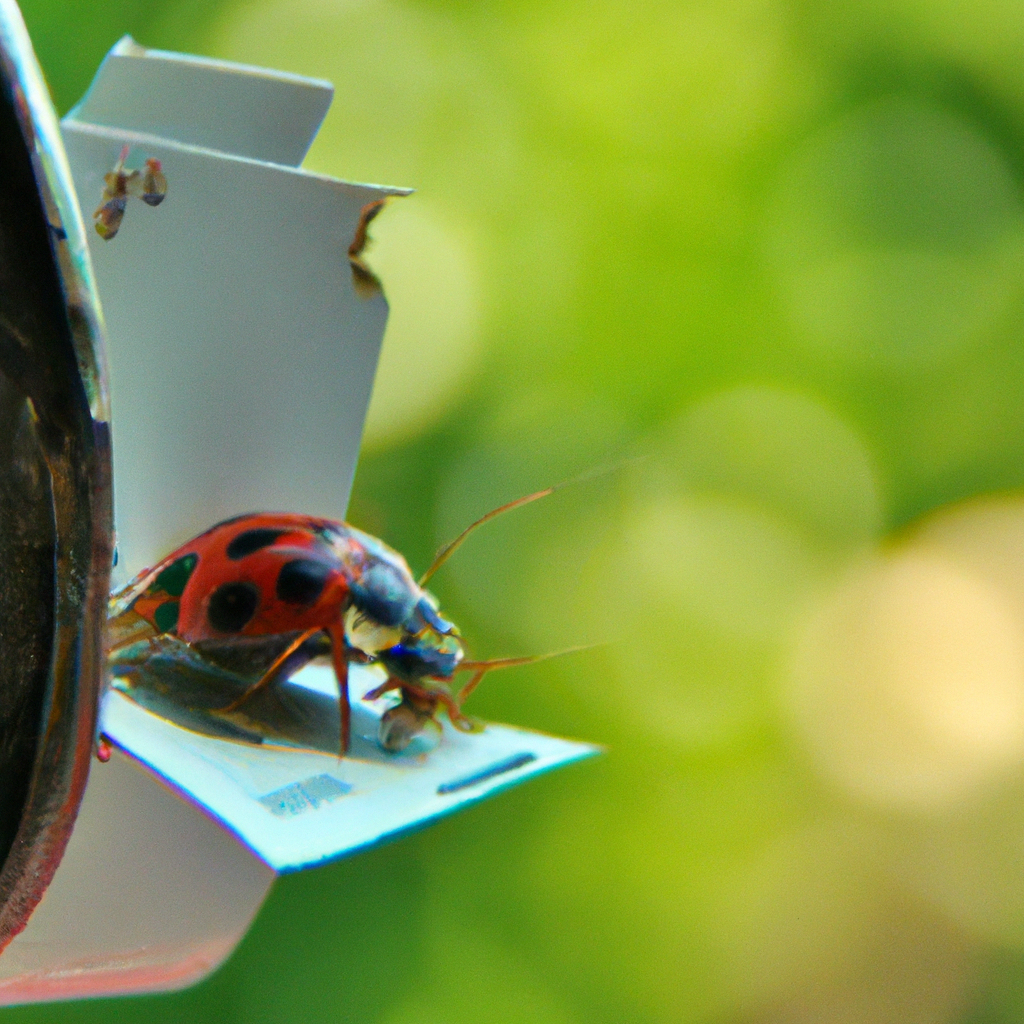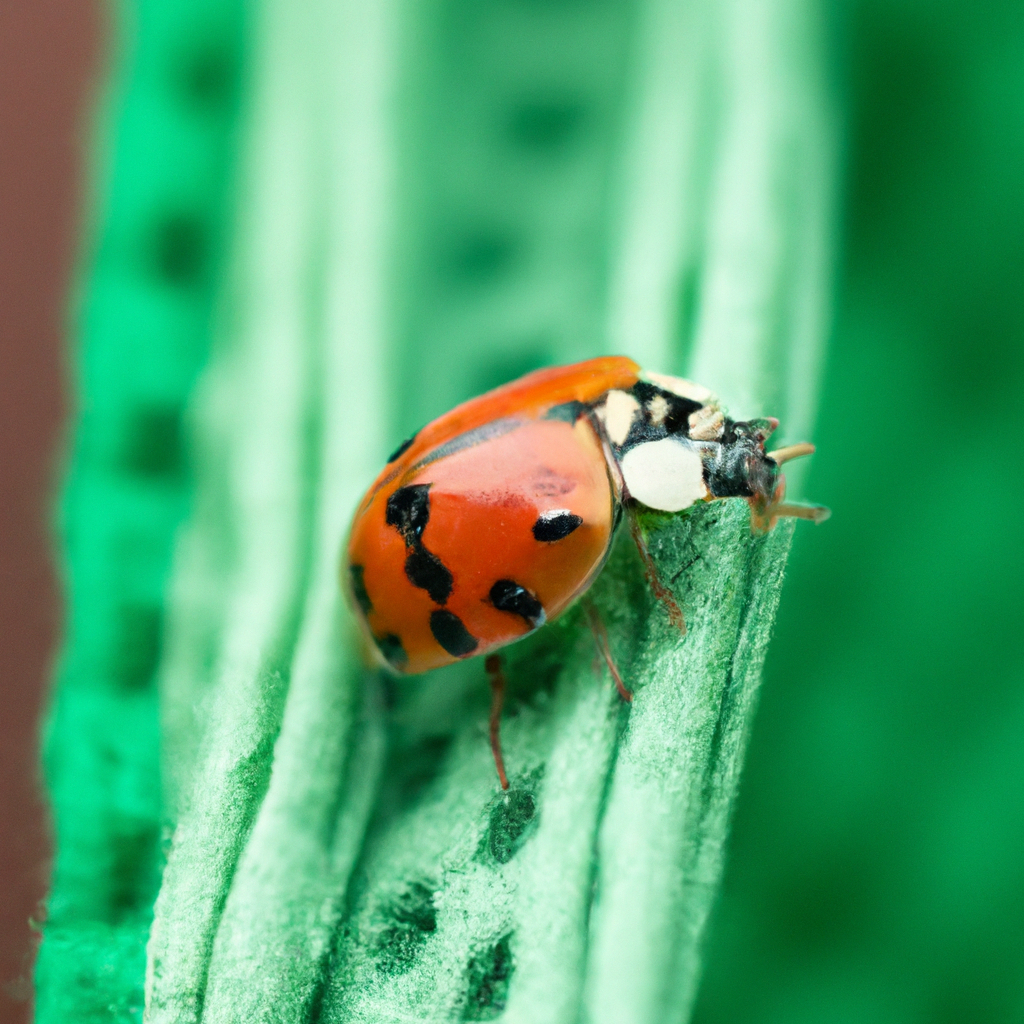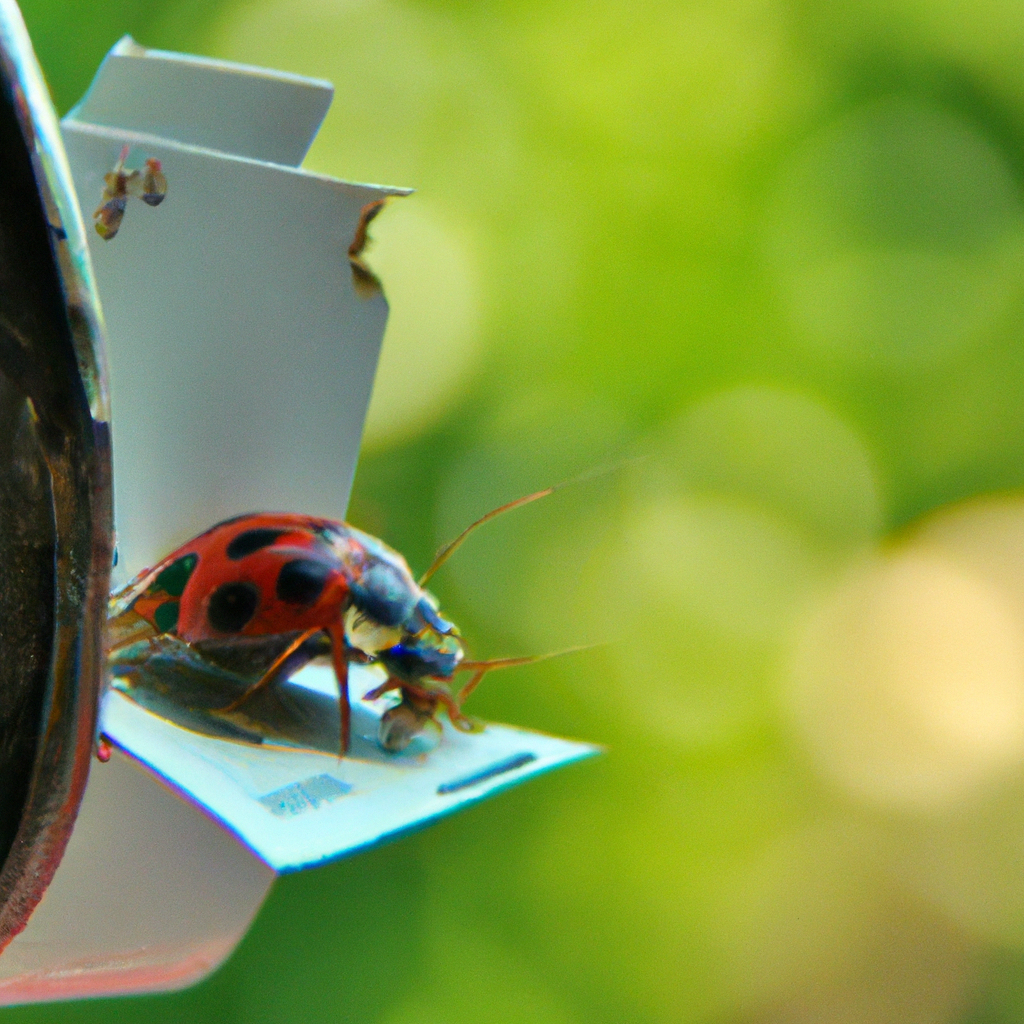
Did you know that there are effective ways to control pests in urban farming without having to rely on chemical solutions? In this article, we will explore the top 10 non-chemical methods that can help you keep your urban farm pest-free. From companion planting to physical barriers, these methods are not only environmentally friendly but also provide sustainable solutions for managing pests. So, if you’re ready to learn more about how to protect your urban farm from unwanted critters without using chemicals, keep reading!

Crop Rotation
Understanding crop rotation
Crop rotation is a fundamental practice in sustainable urban farming that involves systematically changing the types of crops in a given area over a specified period. Instead of growing the same crop continuously year after year, different crops are rotated to minimize the buildup of pests and diseases in the soil. By rotating crops, you can disrupt the life cycles of pests and make it more challenging for them to establish themselves in your urban farm.
Benefits of crop rotation in pest control
Crop rotation offers numerous benefits when it comes to pest control in urban farming. Firstly, it can help reduce the population of soil-borne pests that rely on specific crops for survival. By depriving these pests of their preferred hosts through rotation, their numbers can be significantly reduced. Secondly, crop rotation can interrupt the life cycles of pests, preventing them from reaching damaging levels. Additionally, rotating different crop families can help break the cycle of diseases that target specific plants and alleviate the burden of plant pathogens in your urban farm.
Implementing crop rotation in urban farming
Implementing crop rotation in urban farming requires careful planning and consideration of various factors. Start by dividing your farm into different sections or beds and assign each area to a particular crop or group of crops. It is essential to follow a rotation schedule that takes into account the specific pests and diseases affecting your crops. Consider the growth habits of different crops and choose rotations that effectively disrupt the life cycles of pests. Keep records of your crop rotations and observe the impact on pest populations and overall crop health to refine your approach over time.
Companion Planting
Introduction to companion planting
Companion planting is a traditional agricultural practice where different plants are grown in close proximity to enhance each other’s growth, deter pests, and provide mutual benefits. In companion planting, certain plants have natural affinities or repelling effects on each other, which can be utilized to create a more balanced and pest-resistant ecosystem in your urban farm. By strategically selecting companion plants, you can attract beneficial insects, repel pests, and enhance the overall health of your crops.
Benefits of companion planting for pest control
Companion planting offers numerous benefits for pest control in urban farming. One significant advantage is the ability to repel or confuse pests by interplanting specific crops. Some plants release natural compounds that repel pests, while others emit scents that mask the attractants of pests. Additionally, certain companion plants can attract beneficial insects such as ladybugs, lacewings, and parasitic wasps, which act as natural predators to many common pests. These insects can help keep pest populations in check and reduce the need for chemical interventions.
Examples of companion plants and their uses
There are several examples of companion plants that can help control pests in urban farming. One common example is planting aromatic herbs like basil, rosemary, and mint alongside susceptible crops like tomatoes and peppers. The strong scents of these herbs can confuse and deter pests such as aphids and whiteflies. Nasturtiums are another popular companion plant that attracts aphids away from vegetables like lettuce and cabbage, serving as a sacrificial crop. Marigolds are known to repel nematodes and can be planted as a border around the garden or between susceptible crops. The key is to experiment with different companion plants and observe their effects on pest populations to find the most effective combinations for your urban farm.

Polyculture
Explanation of polyculture in urban farming
Polyculture is a farming practice that involves growing multiple crops together in the same area, creating a diverse and harmonious ecosystem. Unlike traditional monoculture, where a single crop dominates the landscape, polyculture promotes biodiversity by imitating natural plant communities. By integrating a variety of crops, polyculture helps to naturally balance pest populations and reduce the risk of widespread pest outbreaks in urban farming.
Advantages of polyculture for pest management
Polyculture offers several advantages for pest management in urban farming. Firstly, growing a diverse range of plants makes it difficult for pests to find and attack their preferred hosts. The lack of a large, homogeneous crop area can confuse pests and disrupt their ability to locate and infest specific crops. Secondly, diverse planting can attract natural enemies of pests, such as predatory insects and birds, that help control pest populations. The presence of different types of plants provides shelter, alternative food sources, and breeding grounds for these beneficial organisms, creating a more resilient and self-regulating ecosystem.
Creating a balanced polyculture system
To create a balanced polyculture system for pest management in urban farming, it is crucial to carefully select compatible plant combinations. Consider the growth habits, resource requirements, and pest susceptibilities of different crops to ensure harmony within the system. Some plants may repel pests, attract beneficial insects, or serve as trap crops, diverting pests away from valuable crops. It is also important to pay attention to the spatial arrangement of crops, taking into account light requirements and avoiding potential competition for resources. Experiment with different plant combinations, observe their interactions, and make adjustments as needed to optimize the pest control benefits of polyculture in your urban farm.
Physical Barriers
Types of physical barriers in urban farming
Physical barriers are an effective non-chemical method for pest control in urban farming, helping to create a physical deterrent to pest entry. There are various types of physical barriers that can be used, depending on the specific needs and constraints of your urban farm. Some common examples include fences, netting, screens, row covers, and floating row covers. These barriers physically obstruct pests from accessing plants, prevent them from laying eggs or feeding, and create a barrier between susceptible crops and potential infestation sources.
Effective use of fencing and netting
Fencing and netting are two versatile physical barriers that can protect your urban farm from various pests. Fences can be constructed using materials like wire mesh, bamboo, or wood, and should be buried at least six inches into the ground to prevent burrowing pests from tunneling underneath. Fences not only keep out larger pests such as rabbits, deer, and rodents but can also act as support structures for climbing crops like peas and beans. Netting, on the other hand, is particularly useful for preventing insect pests like birds, butterflies, and hail damage. Choose nets with appropriate mesh sizes for the pests you want to exclude and ensure they are securely fastened to prevent pests from squeezing through gaps.
Building structures to deter pests
In addition to fencing and netting, constructing physical structures can help deter pests in urban farming. For example, creating a greenhouse or high tunnel environment provides a barrier against pests while also extending the growing season. Greenhouses can be equipped with vents, screens, and doors to regulate temperature and airflow while keeping pests out. Raised beds with proper edging can prevent soil-borne pests from entering the garden, while trellises and arbors can help train plants vertically and keep them out of reach of ground-dwelling pests. By strategically incorporating physical barriers and structures into your urban farm, you can minimize pest damage and create a protected environment for your crops.

Beneficial Insects
Introduction to beneficial insects
Beneficial insects, also known as natural enemies or predators, play a vital role in pest control in urban farming. These insects are not harmful to plants or humans and can significantly reduce pest populations by feeding on pests, their eggs, or larvae. By promoting the presence and diversity of beneficial insects, you can establish a natural balance that helps control pests without the need for chemicals.
Identifying and attracting beneficial insects
To effectively utilize beneficial insects for pest control in urban farming, it is important to be able to identify and attract them to your farm. Ladybugs, for instance, are well-known predators that feed on aphids, mites, and other soft-bodied pests. Lacewings are another beneficial insect that consumes aphids, caterpillars, and mealybugs. To attract these predators, provide them with sources of food and water, such as nectar-producing flowers, extrafloral nectaries, or small dishes filled with sugar water. You can also incorporate specific plants, known as insectary plants, that provide food, shelter, and breeding sites for beneficial insects. Examples include yarrow, dill, fennel, and sunflowers. By creating an inviting habitat, you can encourage more beneficial insects to take up residence in your urban farm.
Promoting insect biodiversity in urban farming
Promoting insect biodiversity is crucial for sustainable pest control in urban farming. In addition to attracting beneficial insects, it is essential to provide a diverse array of habitats and food sources to support a wide range of beneficial species. This can be achieved by incorporating various types of plants with different flowering times, heights, and growth habits. Additionally, avoid using broad-spectrum pesticides that indiscriminately kill both pests and beneficial insects. Instead, consider using targeted treatments, such as insecticidal soaps or biological control agents, that have a minimal impact on non-target organisms. By fostering insect biodiversity in your urban farm, you can establish a resilient ecosystem where the natural predators keep pest populations in check, reducing the need for chemical interventions.
Traps and Lures
Using traps and lures as non-chemical pest control
Traps and lures are effective non-chemical methods for monitoring and controlling pests in urban farming. These techniques can help reduce pest populations by attracting pests to a specific location or capturing them directly. By strategically placing traps and lures, you can monitor pest activity, identify infestations, and reduce pest numbers without relying on chemicals.
Different types of traps and their targets
There are several types of traps that can be used in urban farming, depending on the target pest. Sticky traps, for example, are sheets or stakes coated with a sticky substance that pests get caught on when they come into contact with it. These traps are particularly useful for capturing flying insects like aphids, whiteflies, and fungus gnats. Pheromone traps, on the other hand, use synthetic versions of insect sex pheromones to attract and trap male insects, disrupting their reproductive cycles and reducing population growth. These traps are commonly used for monitoring and controlling pests like moths or fruit flies. Sluggo traps and beer traps are also effective for attracting and eliminating slugs and snails.
Creating homemade traps and lures
If you are looking for cost-effective options, you can easily create homemade traps and lures for pest control in urban farming. For example, you can make a sticky trap by smearing a bright yellow or blue material with a sticky substance like petroleum jelly or adhesive. Hang these traps around your crops, adjusting their height depending on the target insects. To attract specific pests, you can mix a solution using ingredients like fruit juice, sugar, or beer and place it in containers buried at ground level. This will lure pests like flies, slugs, and snails, effectively reducing their populations. Homemade traps and lures offer a budget-friendly and environmentally friendly alternative for pest control in urban farming.

Biological Control Agents
Understanding biological control agents
Biological control agents, also known as biocontrol agents, are living organisms that are used to control pests in urban farming. These organisms can be naturally occurring predators, parasitoids, or pathogens that are introduced or encouraged in an ecosystem to reduce pest populations. Unlike chemical pesticides, biological control agents are specific to their target pests and have minimal impact on non-target organisms, making them a sustainable and environmentally friendly choice for pest management.
Examples of beneficial organisms for pest control
There are numerous examples of beneficial organisms that can be used for biological pest control in urban farming. Ladybugs, for instance, are voracious predators of soft-bodied pests like aphids, mites, and thrips. Praying mantises and spiders also feed on a wide range of insects, providing effective pest control. Parasitoids, such as certain species of wasps, lay their eggs inside or on the bodies of pests, eventually killing them. Bacillus thuringiensis (Bt) is a naturally occurring soil bacterium that produces proteins toxic to certain insect pests, making it an effective biocontrol agent. These are just a few examples of the many beneficial organisms that can be harnessed for pest control in urban farming.
Implementing biological control in urban farming
Implementing biological control in urban farming involves identifying the target pests and selecting the appropriate beneficial organisms to control them. You can purchase beneficial insects or parasites from reputable suppliers specializing in biological control agents. Introduce these organisms at the appropriate time and in the recommended quantities to ensure their effectiveness. It is important to monitor pest populations and assess the success of biological control interventions in order to make informed decisions and adjust your approach if needed. By incorporating biological control agents into your pest management strategy, you can reduce reliance on chemicals and create a more sustainable and environmentally-friendly urban farm.
Mulching
The role of mulching in pest prevention
Mulching is a versatile technique that can help prevent and control pests in urban farming. Mulch, which can be organic or inorganic material, is applied to the soil surface around plants to conserve moisture, suppress weeds, and modify the soil environment. Beyond these benefits, mulch also acts as a physical barrier that can deter pests from reaching plants, reduce the spread of pathogens, and provide habitat for beneficial organisms.
Types of mulch for urban farming
There are various types of mulch that can be used in urban farming, each with its advantages and considerations. Organic mulches, such as straw, wood chips, grass clippings, and shredded leaves, offer numerous benefits. These materials decompose over time, enriching the soil with organic matter and nutrients. Inorganic mulches, like plastic sheeting or landscape fabric, provide effective weed suppression and moisture conservation. However, they do not contribute to soil fertility and may require careful management to prevent moisture buildup or heat stress. The choice of mulch depends on the specific needs of your urban farm, the type of crops grown, and the presence of existing pests or diseases.
Applying mulching techniques effectively
To apply mulching techniques effectively, start by preparing the soil and removing any existing weeds or debris. Water the area thoroughly before spreading the mulch to ensure proper soil moisture. Apply a layer of mulch around the base of the plants, taking care not to bury the stems. Leave a small space between the mulch and the plant stems to prevent rot and discourage pests from using the mulch as a pathway to reach the plants. Monitor the mulch regularly for signs of pests or diseases and remove and replace it as needed. By applying mulching techniques correctly, you can create a favorable growing environment for your plants while also reducing pest pressures in your urban farm.

Cultural Practices
Adopting cultural practices for pest management
Cultural practices play a crucial role in pest management in urban farming by promoting soil health, plant resilience, and overall garden hygiene. By adopting and implementing specific practices, you can reduce the likelihood of pest infestations, improve plant health, and create a preventive barrier against pests and diseases.
Enhancing soil health and plant resilience
One of the key cultural practices for pest management in urban farming is enhancing soil health and promoting plant resilience. Good soil health ensures that plants receive the necessary nutrients, water, and oxygen, allowing them to thrive and withstand pest pressures. This can be achieved through practices such as regular soil testing and amendment, composting, cover cropping, and crop rotation. By maintaining healthy soil and providing adequate nutrition, you can strengthen your plants’ immune systems, making them more resistant to pests and diseases.
Important cultural practices for urban farmers
Several important cultural practices can be adopted by urban farmers to minimize pest issues. Proper sanitation is crucial, as it reduces the availability of pests’ breeding sites and overwintering habitats. Remove any plant debris, weeds, or fallen fruits regularly to prevent pests from establishing themselves. Additionally, practicing good watering techniques can promote plant health and reduce the risk of fungal diseases. It is recommended to water plants at the base to avoid wetting the foliage, as this can create conditions favorable for diseases to develop. Finally, closely monitor your plants for any signs of pests or diseases, such as discoloration, wilting, or distorted growth. Early detection can prevent the spread of pests and enable prompt intervention.
Repair and Maintenance
Importance of regular repair and maintenance
Regular repair and maintenance are essential for pest control in urban farming, as they help identify and address potential pest entry points. Pests can exploit even the smallest gaps, cracks, or damaged structures to enter your urban farm, causing significant damage to your crops. By inspecting and maintaining your farming infrastructure regularly, you can proactively address these vulnerabilities, create a pest-free environment, and minimize the need for pesticide use.
Inspecting and addressing potential pest entry points
To effectively prevent pest entry, it is important to inspect your urban farming infrastructure regularly. Begin by assessing your fencing, netting, and physical barriers for any damage, holes, or gaps. Repair or replace any damaged sections and ensure the barriers are securely attached to prevent pests from squeezing through or climbing over. Check your greenhouse or high tunnel for any cracks, tears, or openings that could provide entry to pests. Repair these issues promptly using appropriate materials to maintain an enclosed and protected space. Inspect raised beds and containers for signs of deterioration or wear, as pests may exploit weak spots in these structures. Regularly monitor plumbing, irrigation systems, and compost bins for leaks or spills that could attract pests. By addressing these potential entry points, you can significantly reduce the risk of infestations in your urban farm.
Keeping urban farming infrastructure pest-free
In addition to inspecting and repairing potential entry points, regular maintenance is crucial in keeping your urban farming infrastructure pest-free. Cleanliness plays a critical role in pest prevention, so maintain a tidy and organized farm environment. Remove any debris, fallen fruit, or decaying plant matter that can attract pests. Keep storage areas clean and organized to prevent pest infestations. Regularly inspect and clean gardening tools and equipment to avoid the spread of pests or pathogens between plants. If composting on-site, ensure proper management to prevent attracting pests and rodents. By maintaining a clean and well-maintained urban farm, you can create a less favorable environment for pests and reduce the need for chemical interventions.
In conclusion, pest control in urban farming without chemicals requires a holistic approach that encompasses various non-chemical methods. Crop rotation, companion planting, polyculture, physical barriers, beneficial insects, traps and lures, biological control agents, mulching, cultural practices, and regular repair and maintenance are all essential strategies for effective pest management. By implementing these practices, urban farmers can create a sustainable and environmentally friendly system that minimizes the impact of pests while promoting the health and productivity of their crops.





